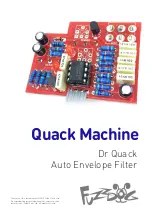
- -
11
M
EASUREMENT
P
ROCESS
The following steps outline how to carry out a turbidity measurement.
•
The cell must be accurately cleaned with distilled water and a non aggressive detergent.
Before measurement check that the cell is clean and that no fingerprints are present.
•
Pour the liquid under examination in the cell: in order to perform a correct measurement, the
liquid must reach at least the white position indicator.
•
Wait until the liquid reaches the environment temperature.
•
Make sure that no air bubbles are trapped in the liquid.
•
Close the cell with the cap, wipe any possible dirt trace using the supplied cloth.
•
Holding the cell by the cap, insert it in the measurement compartment.
•
Screw the measurement compartment cap on, to avoid any external lights distorting the
measurement.
•
Select the desired unit of measurement using the arrows (
and
).
•
Press MEAS to start the measurement: after a few seconds the result is shown on the display.
Now the measurement result can be (see the chapter on page 22):
•
recorded in the instrument internal memory by pressing MEM,
•
printed using a printer connected to the RS232C serial port,
•
sent to a PC connected to the RS232C serial port or the USB 2.0 port.
Comply with the following precautions to increase the measurement accuracy, particularly with low
turbidity measurements:
•
Align the cell reference notch with that on the measurement compartment.
•
Do not leave the measurement compartment open without the cap when the instrument is not
in use.
•
Do not insert wet cells in the measurement compartment.
•
Do not use cells with imperfections, scratches, …
•
Apply a light layer of silicon oil to hide possible glass imperfections using the supplied cloth.
•
Remove any fingerprint on the glass: insert and extract the cell holding it by the cap.
•
Before filling the cell, rinse it using the same liquid being measured.












































